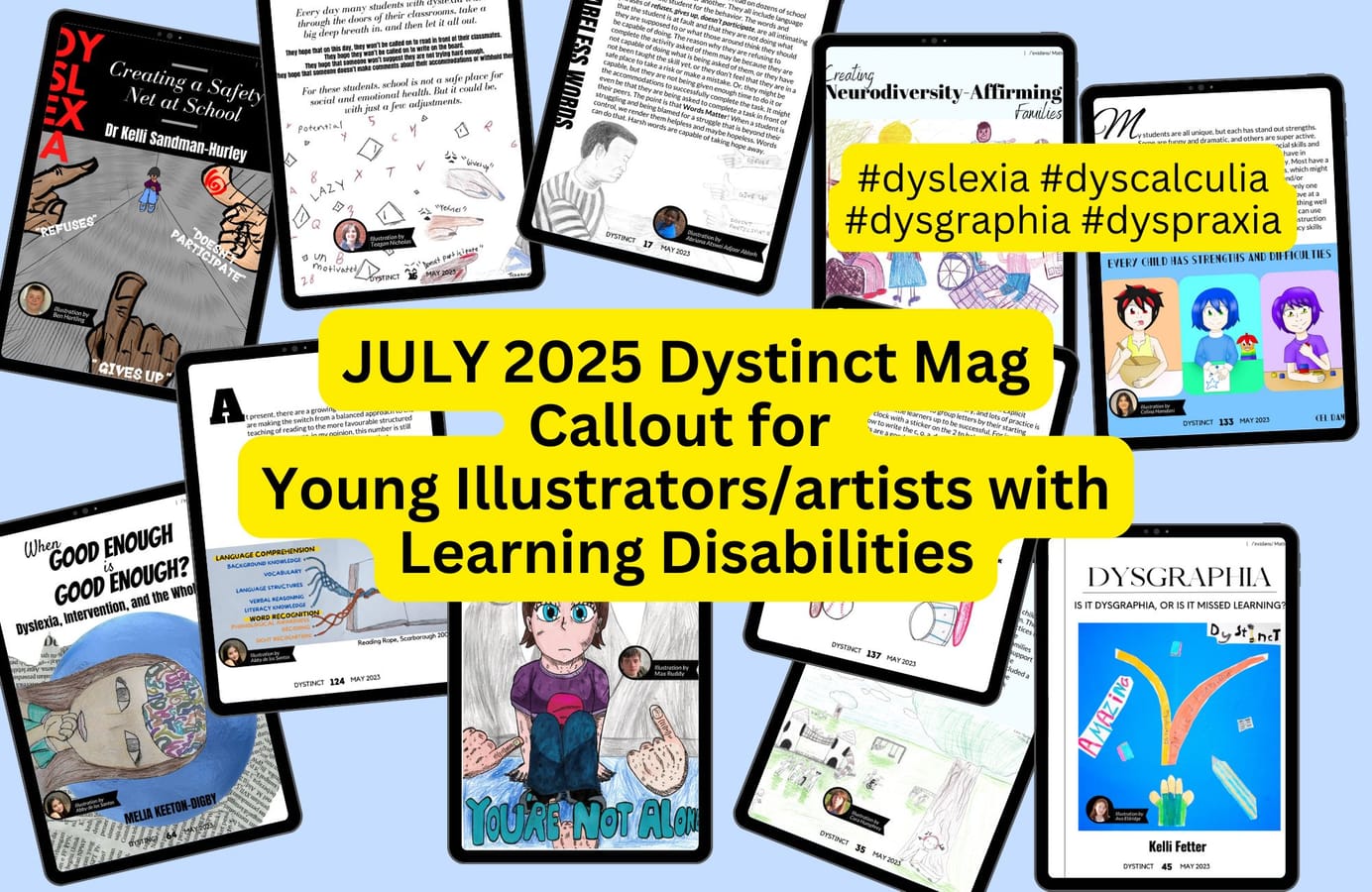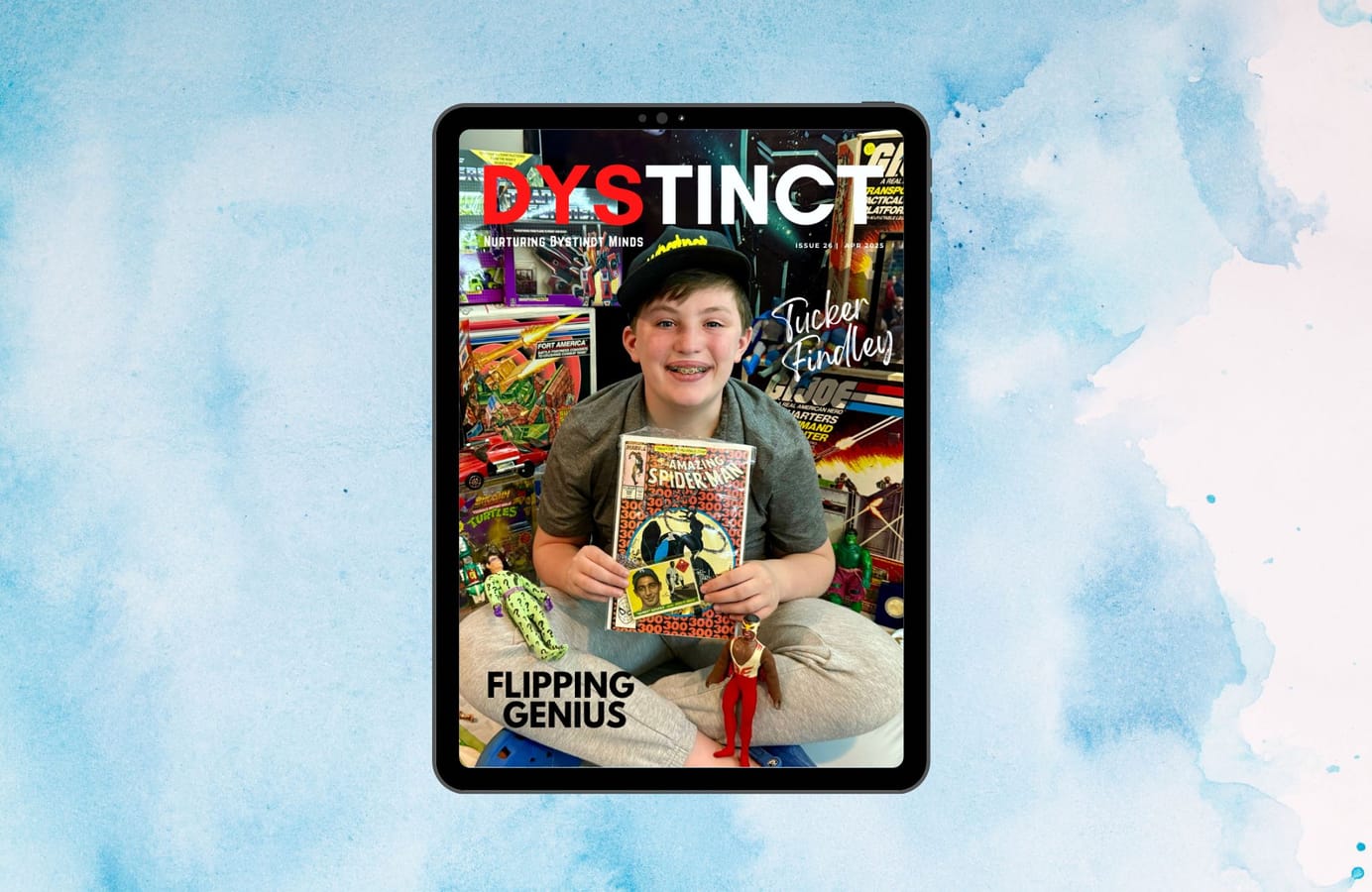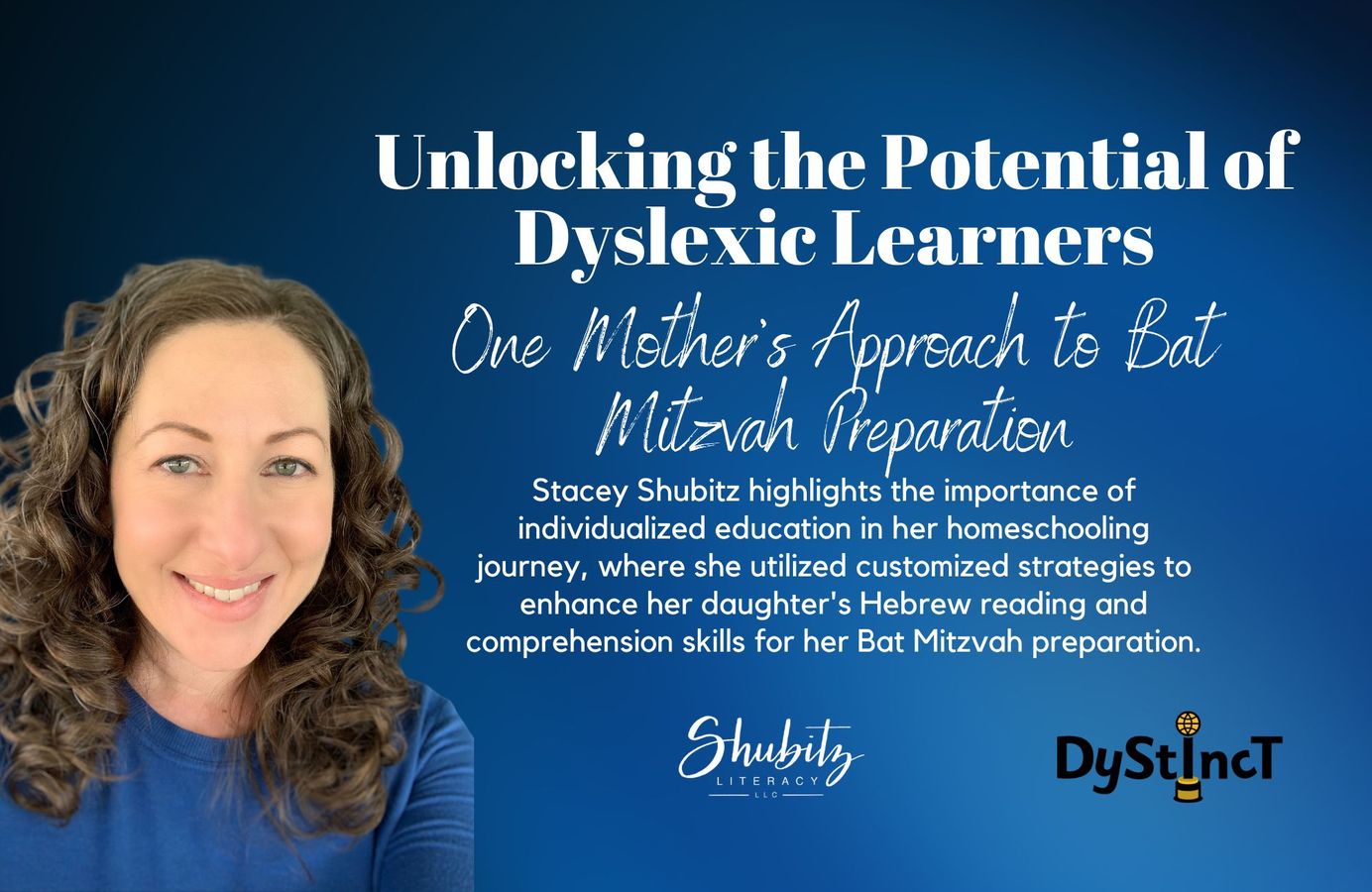
Issue 16: Unlocking the Potential of Dyslexic Learners: One Mother's Approach to Bat Mitzvah Preparation | Stacey Shubitz
Stacey Shubitz highlights the importance of individualised education in her homeschooling journey, where she utilised customised strategies to enhance her daughter's Hebrew reading and comprehension skills for her Bat Mitzvah preparation.
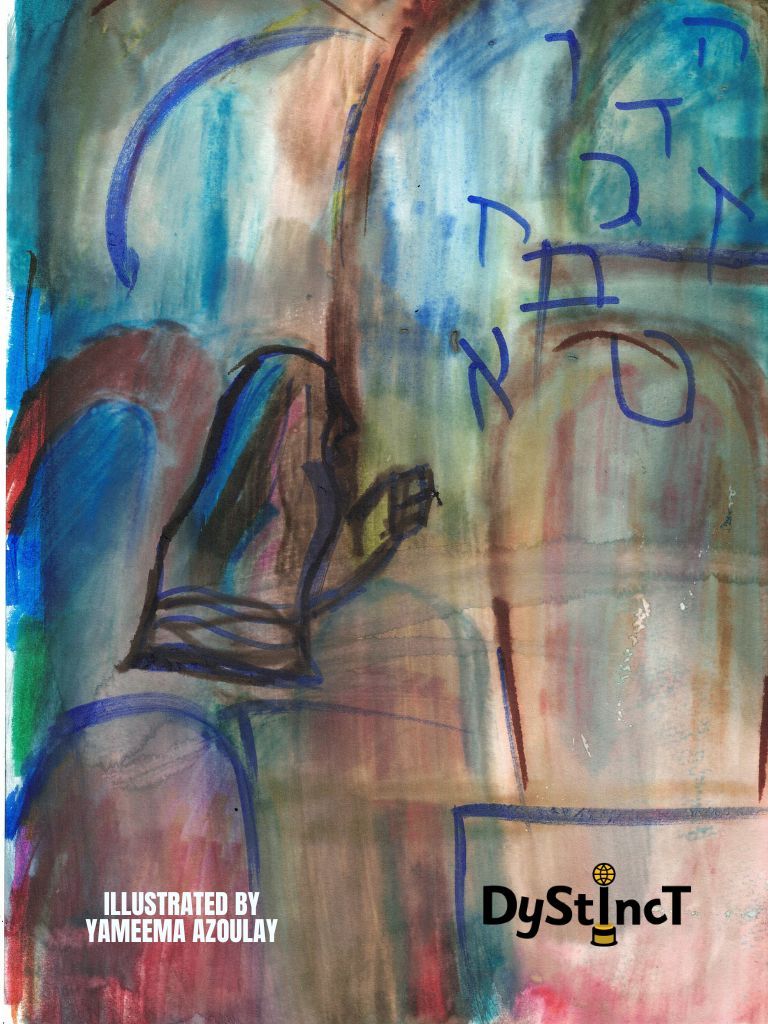
What if I told you my decision to become my daughter's fifth-grade teacher during the pandemic led to an inspiring and life-changing experience?
Covid-19 paused my daughter's in-person education while she was in third grade. While my daughter, Isabelle, completed all her assignments during her synchronous fourth-grade class, there was room for improvement. A vaccine for children was on the horizon but not yet in their arms when fifth grade rolled around. Given 1.5 years of remote instruction, I had to step in to guarantee that Isabelle was getting the most out of her schooling.
The decision to homeschool came with challenges, but I was determined to make it work. As a former fifth-grade teacher in the NYC Public Schools and a literacy consultant since 2009, I knew the curriculum and what was expected of fifth-grade students. However, teaching my own child was a different experience altogether. I felt an enormous responsibility to help Isabelle progress, especially since she is dyslexic. I had to keep her engaged and motivated while balancing my professional responsibilities and caring for my younger child. Plus, I had to balance being her mom and her teacher.
Setting Objectives
Setting Objectives
Under Pennsylvania homeschool law, the child's school district must approve learning objectives. I included typical objectives about reading, writing, math, content areas, and related arts. In addition, I included Hebrew/Judaics objectives, one of which was to improve my daughter's knowledge of Hebrew vocabulary and prayers.
My daughter attended Jewish day school from pre-Kindergarten through second grade. I knew she had lost some of her Hebrew reading skills. Since she was approaching her Bat Mitzvah, I devoted about 30 minutes of our school day to working on Hebrew vocabulary and prayers. Many days this was an idyllic way to begin a school day.
However...
Hebrew is Hard.
Hebrew is written and read from right to left, the opposite of English! The Hebrew alphabet has 22 letters that look nothing like the Latin alphabet's 26 letters. Some Hebrew consonants have two forms or different characters that appear as the final letter of a word. In addition, Hebrew has a five-vowel system; the vowels are represented by marks placed above the letter, directly underneath the letter, or beside the letter.
While many people think Hebrew's five-vowel system is easy, I understood how challenging it was for Isabelle since I worked beside her daily. Isabelle would feel like the vowels were playing tricks on her as she tried to decode some words. For example, she would get frustrated when a two-vowel sequence occurred. As a proficient prayerbook Hebrew reader who is nowhere near fluent in Hebrew, it became incumbent upon me to help Isabelle sort this out.
Strategies for Mastering Hebrew
Strategies for Mastering Hebrew
I used some of the strategies my teachers used with me when I attended Hebrew school as a child. Plus, I applied some of the strategies I've learned as the parent of a dyslexic child to adapt the text to make it easier for Isabelle to read fluidly and confidently.
Limit Distractions
Many prayerbooks and Torah practice booklets contain the Hebrew text, the translation of the text, and commentaries on the text. That's a copious amount of writing on a page! We used sticky notes to cover up parts of page spreads, so Isabelle's eyes could focus only on the Hebrew text.
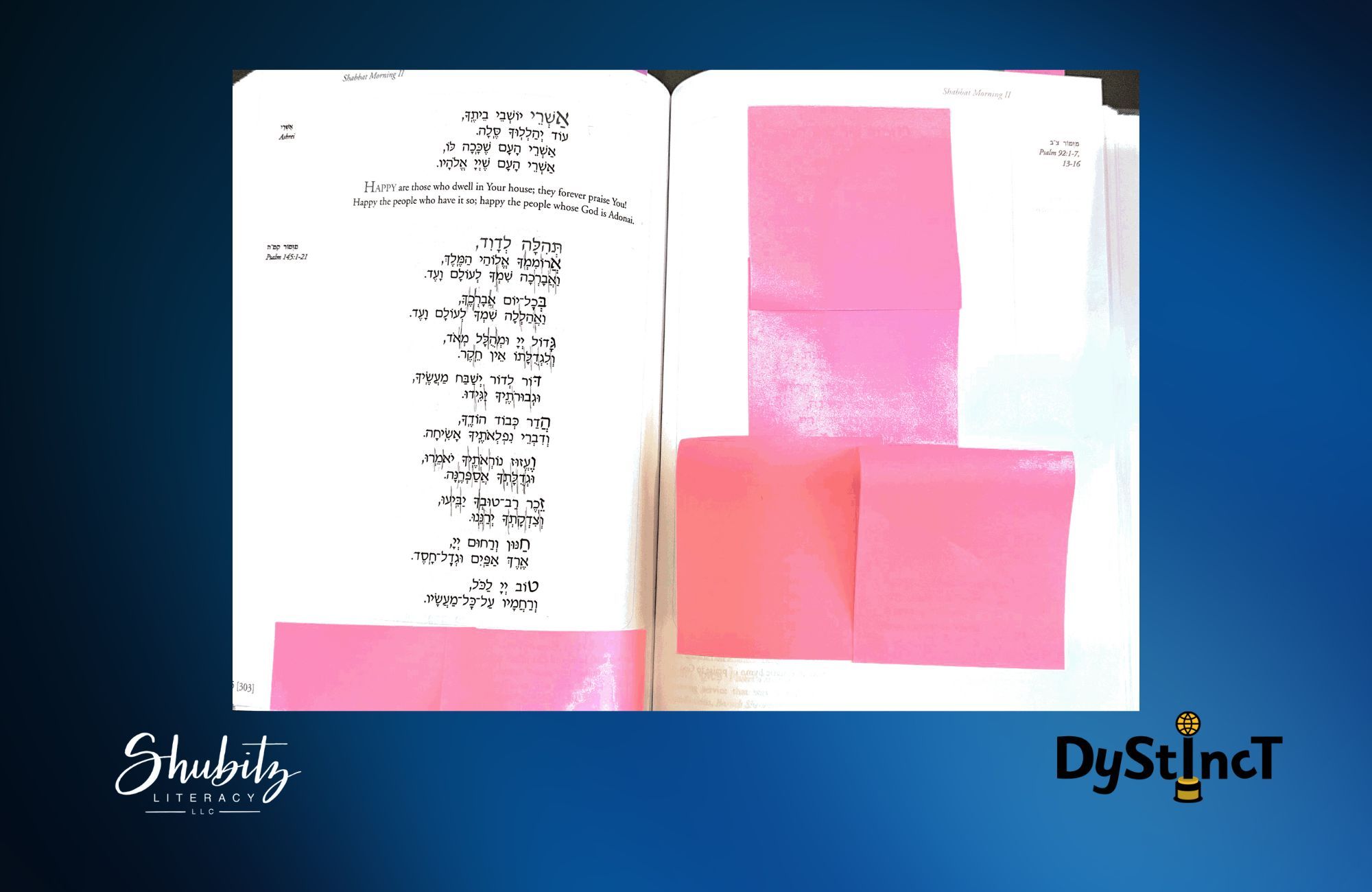
Seek Out Easy-to-Read Font
Over the years, I’ve learned fonts must be accessible to children. Embellished typefaces with eccentric flourishes or swashes are more challenging to read. Since a few Hebrew letters look similar, a font that ensures letters are easily identifiable and distinguishable from other letters is crucial. In addition, white space between lines and margins also increases readability.
Our local rabbi encouraged us to buy the Mishkan Tefilah prayerbook since our synagogue uses it on Shabbat. However, my daughter would have her Bat Mitzvah in Israel with one of my dearest friends, who is a rabbi, officiating the ceremony. The Bat Mitzvah service booklet Isabelle would use was written in smaller font with less spacing between words and lines. The booklet's size, spacing, and font were more challenging for Isabelle to read. My friend encouraged Isabelle to practice reading the prayers in Mishkan Tefilah and told her to use whatever prayerbook was most accessible to her on the day of her Bat Mitzvah.
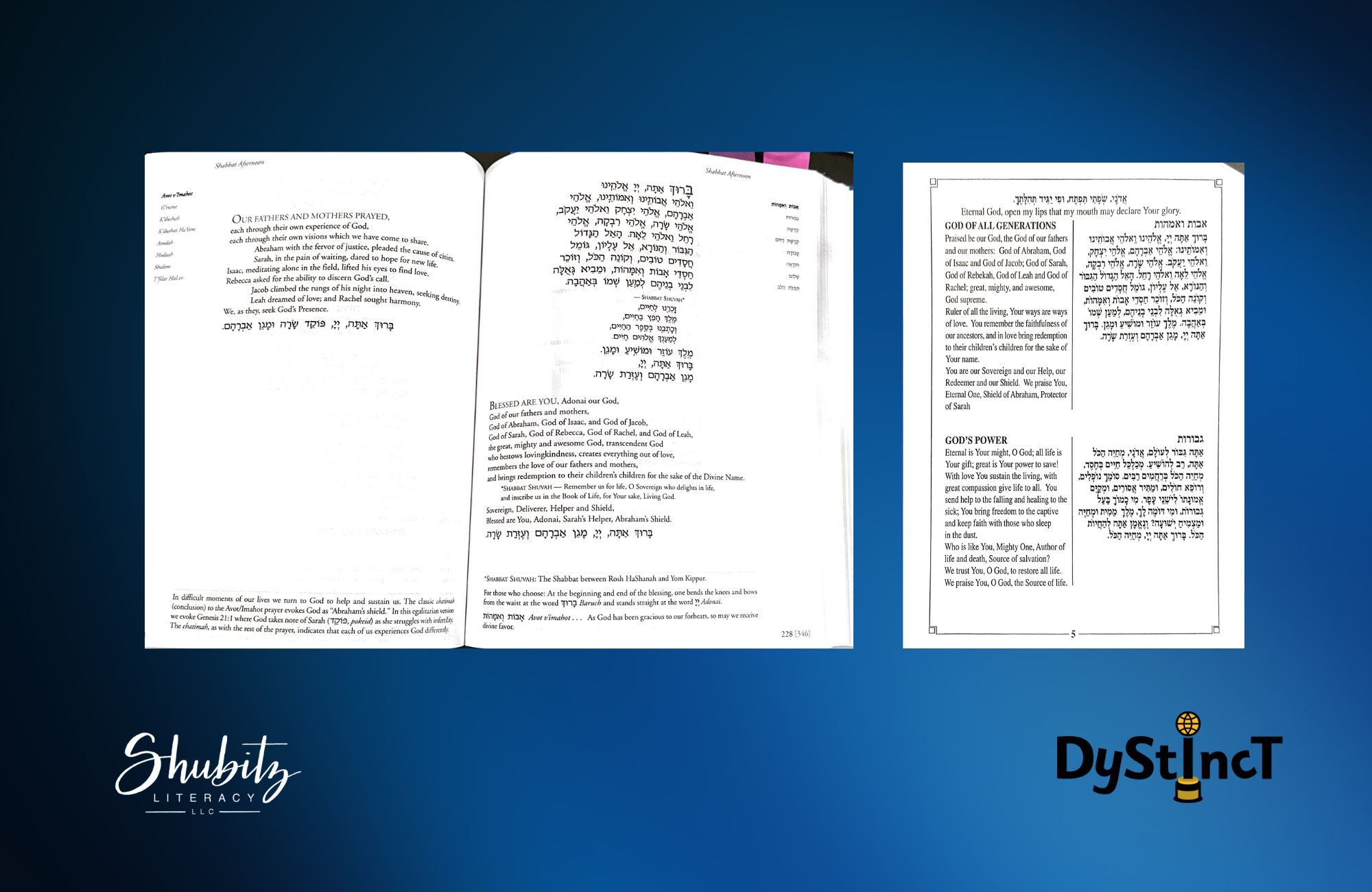
Enlarge the Font
Occasionally, I enlarged the size of the Hebrew text on our home copier. Bigger text versions helped Isabelle decode words easier by improving the visibility of the vowels.
Use a Finger
I encouraged Isabelle to use her left index finger, since Hebrew is read from right to left, to keep track of her place in a text. Once Isabelle mastered a prayer, I noticed she’d often use her finger to keep her place in denser text parts.
This post is for paying subscribers only
SubscribeAlready have an account? Log in

